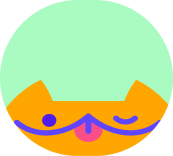KT1
Cards (40)
- When and why did Ferdinand and Isabella support Columbus?
- What were the challenges of Columbus' first voyage?
- When did the Columbus' first expedition leave?
- When was land first sighted on Columbus' expedition?
- What happened on 12 October 1492?
- What did the natives call San Salvador?
- When and where in Europe did Columbus arrive after his first voyage?
- What was the significance of Columbus' first voyage?
- Why was La Navidad built?
- Why did Columbus leave San Salvador and where did he go?
- When did Columbus leave San Salvador?
- What did Columbus call Cuba and why?
- When and where did Columbus arrive back in Spain after his first voyage?
- What were the three ships on Columbus' first voyage?
- What happened to Martin Pinzón after he left the first voyage?
- On Columbus' first expedition what did he discover?
- Who were the Tainos? How did Columbus describe them?
- Who were the the Caribs? How did Columbus describe them?
- What was the incident at Samana (in Haiti)?
- Why was the incident at Samana significant?
- What caused the conflict of who owned the land in the New World?
- What was the Treaty of Tordesillas?
- When was the Treaty of Tordesillas agreed?
- What was the role of the Pope in Spain's claim of lands?
- Why was Isabela founded?
- Why did Isabela never prosper?
- When did Columbus leave Haiti to continue exploring after becoming governor and where did he go?
- Who did Columbus leave in charge at Isabela, whilst he explored?
- Why was Santo Domingo built?
- When did Columbus return to Haiti after exploring and what did he find?
- How did Columbus restore authority in Santo Domingo?
- Who was told to take over from Columbus as governor and when?
- What happened to Columbus after Bobadilla took over?
- How did disease and death effect the New World?
- How were the natives effected in the New World expedition?
- How did gold and tribute effect the New World?
- Who established the encomienda system?
- What was the Casa de Contratacion and what did it do?
- What were the Laws of Burgos and when were they introduced?
- What was the significance of the Law of Burgos?
